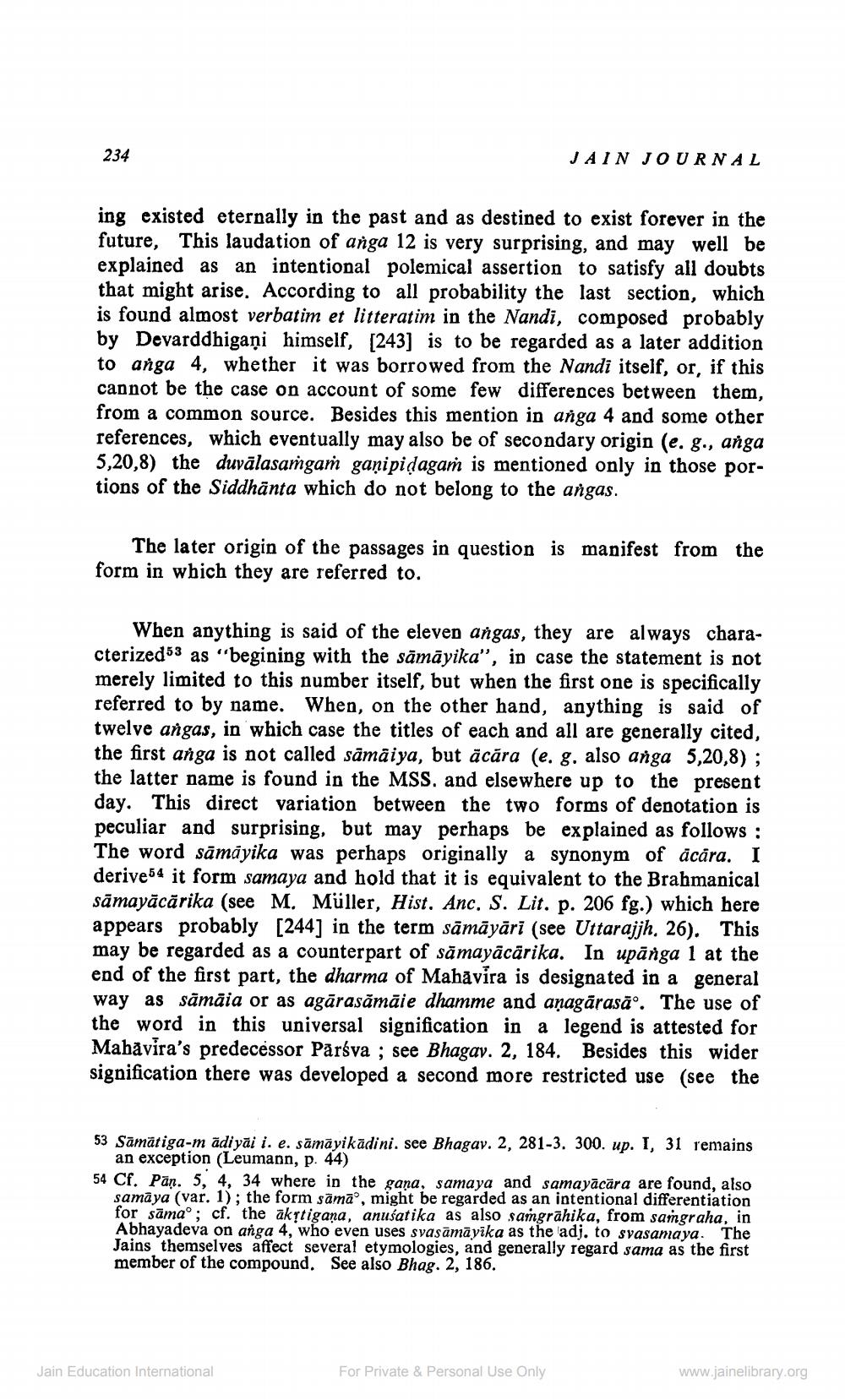________________
234
ing existed eternally in the past and as destined to exist forever in the future, This laudation of anga 12 is very surprising, and may well be explained as an intentional polemical assertion to satisfy all doubts that might arise. According to all probability the last section, which is found almost verbatim et litteratim in the Nandi, composed probably by Devarddhigani himself, [243] is to be regarded as a later addition to anga 4, whether it was borrowed from the Nandi itself, or, if this cannot be the case on account of some few differences between them, from a common source. Besides this mention in anga 4 and some other references, which eventually may also be of secondary origin (e. g., anga 5,20,8) the duvalasamgaṁ ganipiḍagam is mentioned only in those portions of the Siddhanta which do not belong to the angas.
JAIN JOURNAL
The later origin of the passages in question is manifest from the form in which they are referred to.
When anything is said of the eleven angas, they are always characterized as "begining with the sāmāyika", in case the statement is not merely limited to this number itself, but when the first one is specifically referred to by name. When, on the other hand, anything is said of twelve angas, in which case the titles of each and all are generally cited, the first anga is not called sämaiya, but äcăra (e. g. also anga 5,20,8); the latter name is found in the MSS. and elsewhere up to the present day. This direct variation between the two forms of denotation is peculiar and surprising, but may perhaps be explained as follows: The word sāmāyika was perhaps originally a synonym of acara. I derive54 it form samaya and hold that it is equivalent to the Brahmanical sāmayācārika (see M. Müller, Hist. Anc. S. Lit. p. 206 fg.) which here appears probably [244] in the term sāmāyāri (see Uttarajjh. 26). This may be regarded as a counterpart of samayācārika. In upanga 1 at the end of the first part, the dharma of Mahavira is designated in a general way as sāmāia or as agārasāmāie dhamme and aṇagarasa°. The use of the word in this universal signification in a legend is attested for Mahavira's predecessor Parśva; see Bhagav. 2, 184. Besides this wider signification there was developed a second more restricted use (see the
53 Samätiga-m adiyāi i. e. sāmāyikadini. see Bhagav. 2, 281-3. 300. up. I, 31 remains an exception (Leumann, p. 44)
54 Cf. Pan. 5, 4, 34 where in the gana, samaya and samayacara are found, also samaya (var. 1); the form sama, might be regarded as an intentional differentiation for sama; cf. the akṛtigana, anuśatika as also samgrahika, from samgraha, in Abhayadeva on anga 4, who even uses svaṣāmāyika as the adj. to svasamaya. The Jains themselves affect several etymologies, and generally regard sama as the first member of the compound. See also Bhag. 2, 186.
Jain Education International
For Private & Personal Use Only
www.jainelibrary.org




